Versions Compared
Key
- This line was added.
- This line was removed.
- Formatting was changed.
This section provides a brief introduction to the navigation and main views of R4J.
Main Navigation Bar
R4J adds a new menu item Requirements to the main navigation bar.
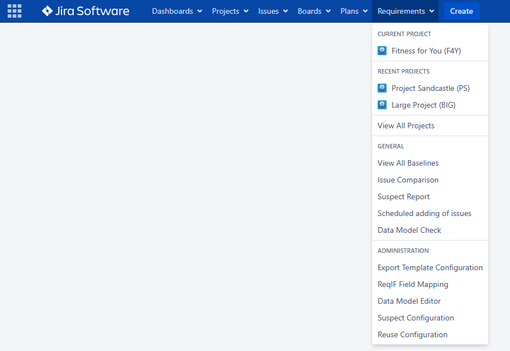
The menu includes links to the most important views of R4J:
Current Project: Shows the last project that was used by the logged in user.
Recent Projects: Shows the last projects that were used by the logged in user.
View All Projects: Opens a list of projects that are enabled for R4J.
General
View All Baselines: Lists all the baselines created for R4J projects.
Issue Comparison: Allows users to compare two Jira issues side-by-side.
Suspect Report: Provides a filtered list of suspect links across projects.
Scheduled adding of issues: Overview of configured scheduling rules by project.
Administration
Export Template Configuration: Management of uploaded export templates.
ReqIF Field Mapping: (dark feature) Create field mappings for ReqIF import and export.
Data Model Editor: (dark feature) Create data model rules between issues and links.
Suspect Configuration: Settings for suspect logic.
Reuse Configuration: Presets used to standardize requirement reuse.
Tree View and its sub-views
The tree view comprises of the tree hierarchy on the left side, and a sub-view content display on the right side.
When clicking a folder, issue, or page in the tree hierarchy, there is an option to switch between 3 types of views based on how you want to review the item. These are the detail view, reading view, and tabular view buttons respectively.
The selected sub-view is persisted per item type for efficiency.
Detail View
The Detail Viewis the default view for issues. It includes all the information of the selected issue: summary, description, other fields, attachments, child requirements, issue links and revisions, along with workflow actions.
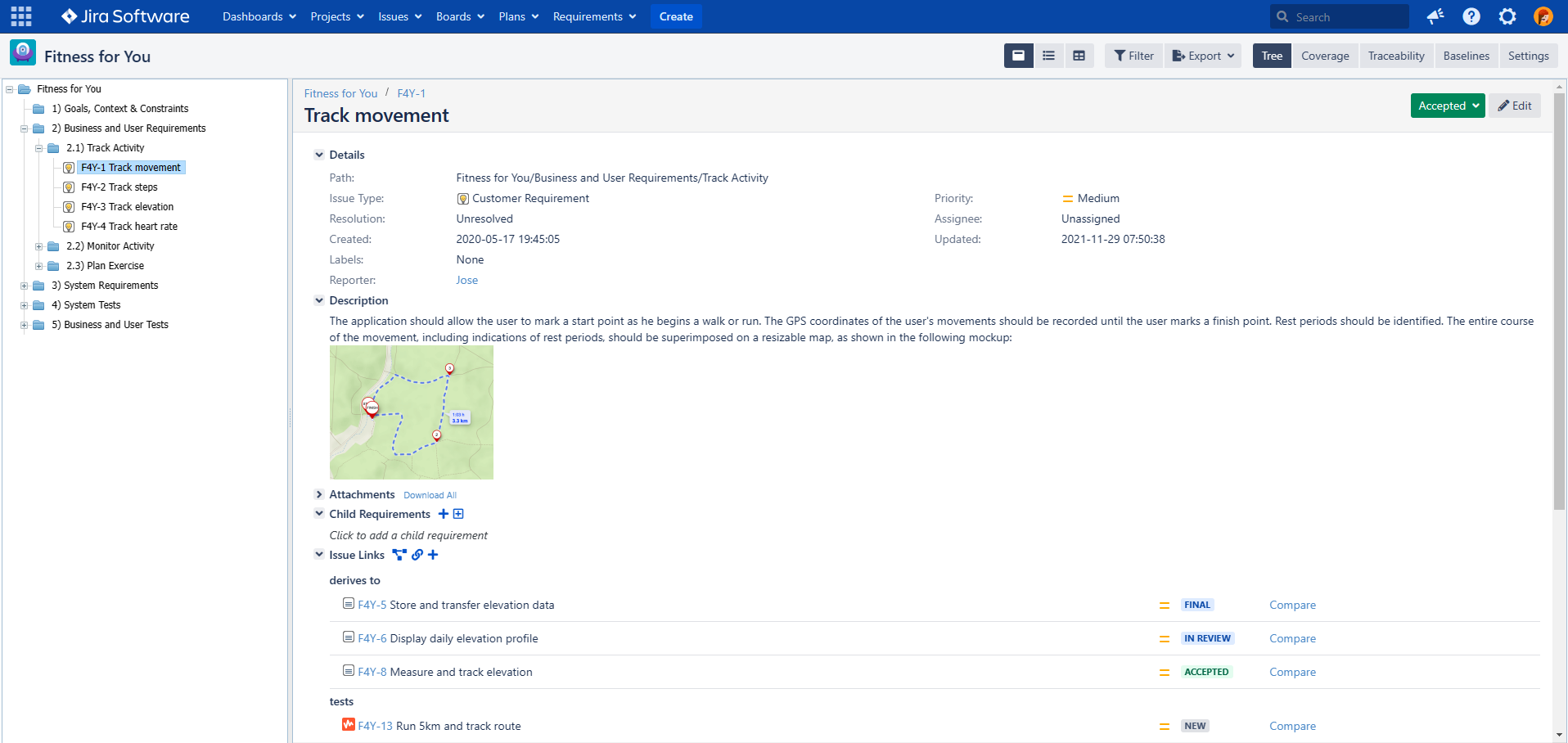 Image Removed
Image Removed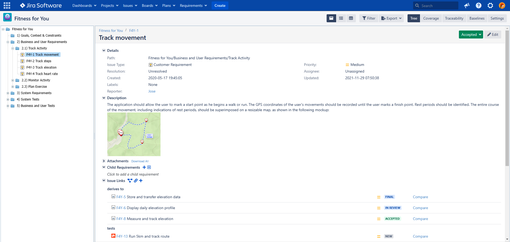 Image Added
Image AddedReading View
The Reading View is the default view for folders. It allows you to review requirements and folders in their relevant context.

Tabular View
The Tabular View displays the contents of the selected tree item as a flat list.
Coverage View
The Coverage View provides insight into the consequences of requirement changes. It also shows how complete the coverage is. For example, the view can show whether all features have corresponding requirements. To open the view, select the Coverage button and then select a specific view. See Coverage View to learn how views are created.
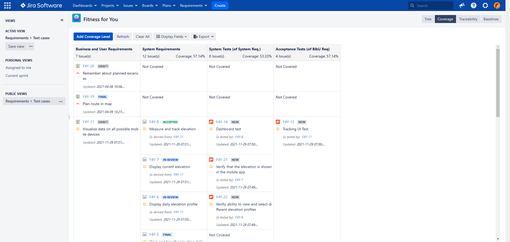
Traceability View
The Traceability View provides a matrix showing the relationships between two sets of issues. To open the view, select the Traceability button and then select a specific view. See the Traceability Matrix to learn how views are created.
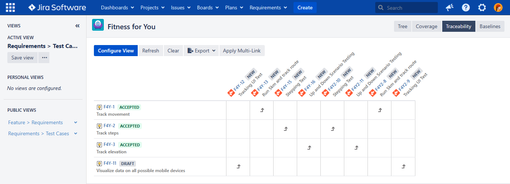
Settings
The Settings Dialog allows you to enable or disable the following settings:
auto numbering in tree view and reading view
tool tips in the tree view
the remember feature for tree navigation
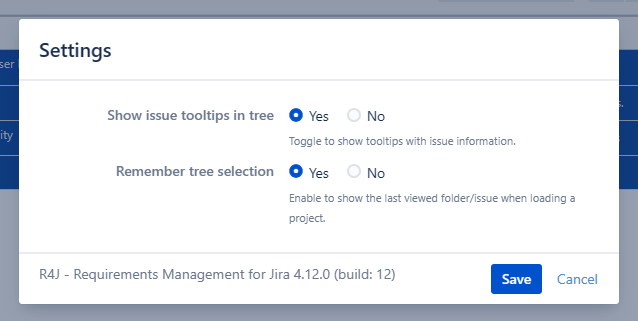
| Table of Contents |
|---|